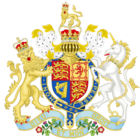Metropolitan Commission of Sewers facts for kids
| Abbreviation | MCS |
|---|---|
| Predecessor | Sewer commissions of:
|
| Successor | Metropolitan Board of Works |
| Formation | 1 January 1849 |
| Dissolved | 1 January 1856 |
| Type | Ad hoc board |
| Legal status | Statutory authority |
| Purpose | Public health, sewerage, drainage |
| Headquarters | 1 Greek Street |
| Location |
|
| Origins | Metropolitan Commission of Sewers Act 1848 |
|
Region served
|
Inner London |
|
Membership (1854–1856)
|
21 |
|
Chairman
|
Richard Jebb |
|
Engineer
|
Joseph Bazalgette |
| Commissioners | |
|
Parent organization
|
Government of the United Kingdom |
The Metropolitan Commission of Sewers (MCS) was an important group in London's history. It was one of the first steps to manage the city's sewers and drainage systems under one public body. This commission later became part of the Metropolitan Board of Works on January 1, 1856.
Why the Commission Was Formed
| Act of Parliament | |

|
|
| Long title | An Act to consolidate, and continue in force for Two Years and to the End of the then next Session of Parliament, the Metropolitan Commissions of Sewers. |
|---|---|
| Citation | 11 & 12 Vict. c. 112 |
| Dates | |
| Royal assent | 4 September 1848 |
| Other legislation | |
| Repeals/revokes |
|
| Text of statute as originally enacted | |
The commission was created by a law called the Metropolitan Commission of Sewers Act 1848. This happened because of serious cholera outbreaks. People were worried about public health. The commission's job was updated with new laws in 1851, 1852, 1853, 1854, and 1855. Important members included Sir Edwin Chadwick and Robert Stephenson.
This new group brought together eight smaller, local sewer boards. These boards had been set up by earlier laws. They included:
- Tower Hamlets Commission of Sewers
- St Katharine's Commission of Sewers
- Poplar and Blackwall Commission of Sewers
- Holborn and Finsbury Commission of Sewers
- Westminster and Middlesex Commission of Sewers
- Surrey and Kent Commission of Sewers
- Greenwich Commission of Sewers
- Commissioners of the Regent's Park Sewers
The commission covered a large area around London. This included parts of Middlesex, Surrey, Essex, and Kent. It stretched up to twelve miles from St. Paul's Cathedral. The main office was at 1 Greek Street, in Soho. The City of London had its own sewer commission, so it was not part of this new group.
What the Commission Did
The commission looked closely at London's old sewer system. They worked to get rid of about 200,000 cesspits. These were pits that collected waste. The commission made sure that all cesspits were closed. They also insisted that house drains connect to sewers. These sewers then emptied into the River Thames. This decision later played a big part in "The Great Stink" of 1858.
The commission hired Joseph Bazalgette in 1849 as an assistant surveyor. He became the chief engineer in 1852. This happened after the previous engineer passed away from stress. Bazalgette then became the chief engineer for the commission's replacement, the Metropolitan Board of Works, in 1856. After "The Great Stink," his plans to modernize the London sewerage system were put into action.
Leaders of the Commission
Here are the people who led the commission during its time:
- Viscount Ebrington (January 1, 1849 – October 6, 1851)
- Edward Lawes (October 6, 1851 – July 24, 1852)
- Richard Jebb (July 24, 1852 – January 1, 1856)
See also
- Public Health Act 1848
- Medical Officer for Health
- Commissions of sewers

